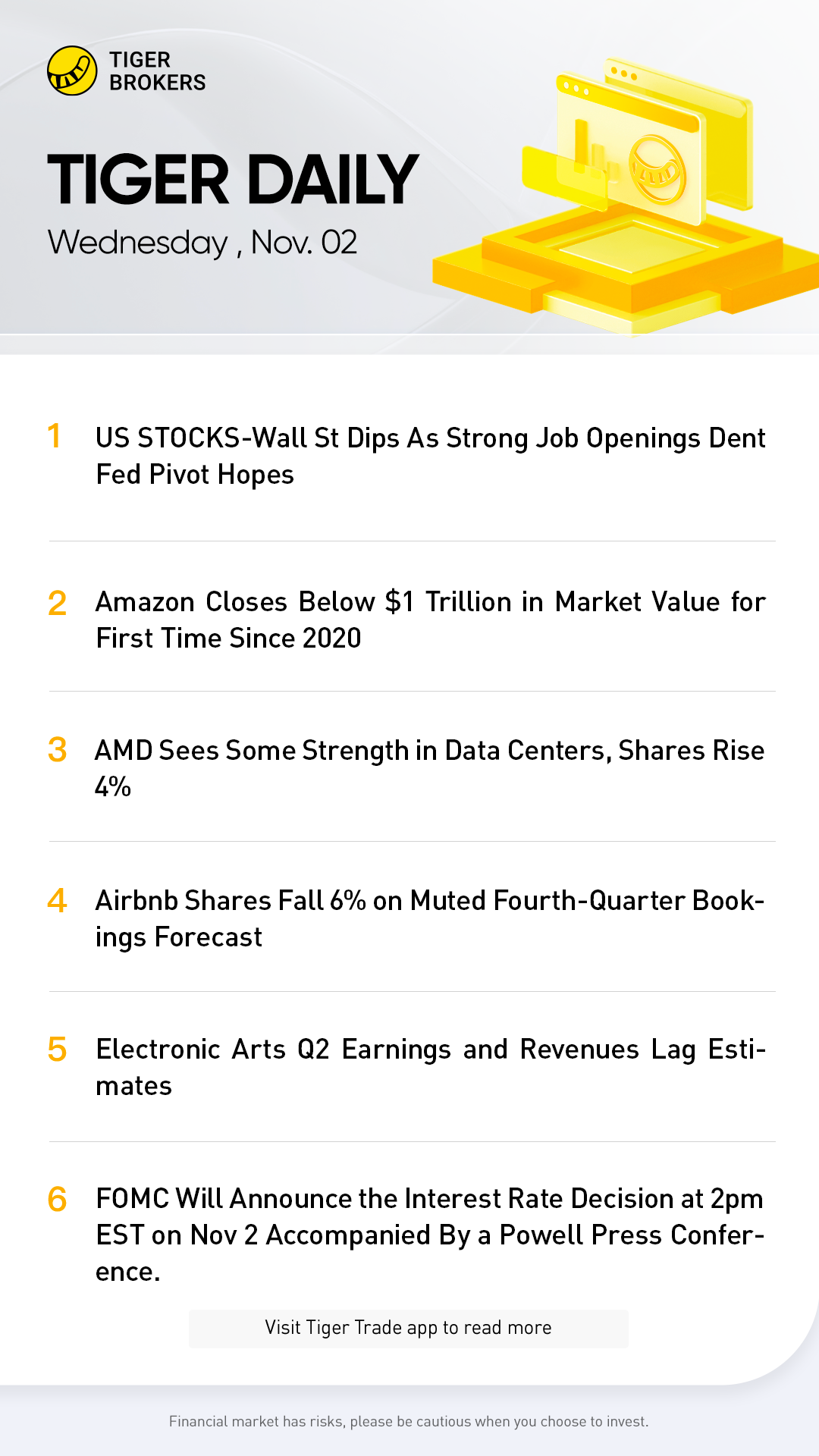- U.S. job openings rise in Sept
- Manufacturing activity slows
- Uber, Pfizer jump on upbeat forecasts
- Indexes down: Dow 0.37%, S&P 0.47%, Nasdaq 0.81%
Wall Street's main indexes fell on Tuesday after data pointing to strength in the labor market dented hopes that the Federal Reserve would signal an easing in the pace of its interest rate hikes.
A survey showed U.S. job openings unexpectedly rose in September, suggesting that demand for labor remains strong despite the Fed's aggressive interest rate increases aimed at stemming rampant inflation.
The data disappointed investors keenly watching out for signs of a cooling labor market and slowing economic growth that could persuade the Fed to take a less hawkish approach with a 50-basis point rate hike in December.
Such hopes, bolstered by some recent reports hinting at a slowing economy, along with better-than-expected earnings had helped drive a solid rally for U.S. stocks in October.
"Hopes for a Fed dovish pivot are misplaced if today's job openings are any guide," said Ronald Temple, head of U.S. equity at Lazard Asset Management.
"Despite other signs of economic deceleration, the job openings data taken together with nonfarm payroll growth indicate the Fed is far from the point where it can declare victory over inflation and lift its foot off the economic brake."
As markets brace for another hefty 75 basis point rate hike from the central bank on Wednesday, comments from policymakers following the decision and key labor data at the end of the week will be on investors' radar for further clues on the outlook for interest rates.
"This is still a very hot labor market ... labor demand is still very strong; meanwhile, labor supply is dwindling. In this context, it's hard to see how labor cost pressures can cool sustainably in the near-term," Jefferies economists wrote in a note.
On the other hand, a separate report showed U.S. manufacturing activity grew at its slowest pace in nearly 2-1/2 years in October as rising interest rates cool demand for goods.
Bogging down the tech-heavy Nasdaq, megacap growth firms such as Amazon.com, Alphabet and Microsoft fell between 2% and 6%.
Meanwhile, among S&P 500 sectors, energy continued to outperform, rising as much as 1.4%.
At 12:33 p.m. ET, the Dow Jones Industrial Average was down 120.04 points, or 0.37%, at 32,612.91, the S&P 500 was down 18.09 points, or 0.47%, at 3,853.89, and the Nasdaq Composite was down 88.65 points, or 0.81%, at 10,899.49.
Among single stocks, Uber Technologies climbed 12.1% after giving an upbeat fourth-quarter profit view that also lifted shares of its rivals Lyft Inc and DoorDash .
Pfizer rose 2.7% after the drugmaker raised full-year sales estimates for its COVID-19 vaccine, while Eli Lilly slipped 4.6% on trimming its profit forecast.
U.S.-listed shares of Chinese firms such as JD.Com and Alibaba Group Holding rose between 0.5% and 5% following rumors based on an unverified note circulating on social media that China was planning a reopening from strict COVID-19 curbs in March.
Advancing issues outnumbered decliners by a 1.81-to-1 ratio on the NYSE and by a 1.42-to-1 ratio on the Nasdaq.
The S&P index recorded 22 new 52-week highs and eight new lows, while the Nasdaq recorded 80 new highs and 73 new lows.

